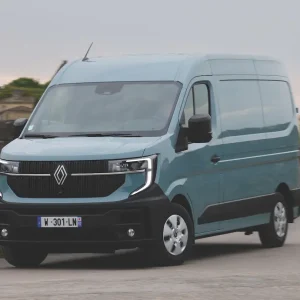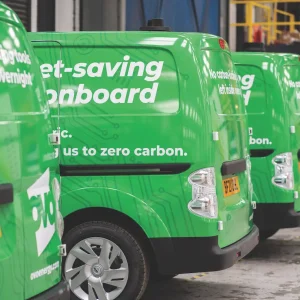For the third year on the trot Dacia’s competitively priced Duster Commercial has spirited away our 4×4 Van of the Year accolade. Its price, however, is not the sole reason why it is a winner once again.
A high level of equipment has helped. So has its ability to keep going down narrow country lanes covered with deep winter snow and across muddy paddocks sodden with autumn rain and slippery with horse manure.
Equipped with selectable four-wheel drive but also marketed as a front-wheel drive 4×2, the Duster Commercial is derived from the five-door Duster SUV.
Under the bonnet is a 109hp 1.5-litre Euro6 dCi 110 diesel. Fitted with a particulate filter, the eight-valve four-cylinder common-rail direct-injection turbocharged engine produces top power at 4,000rpm. Maximum torque of 260Nm bites at 1,750rpm.
All models come with a six-speed manual gearbox. However, the one in the 4×4 is different from the 4×2’s because it has a shorter first gear ratio that is better adapted to off-road work.
The 4×4 Duster features two-wheel drive, four-wheel drive and auto settings. The last-named automatically distributes torque between the front and rear axles in line with the highway conditions encountered by the driver – everything from snow to mud washed onto the carriageway by flood water.
Two trim levels are on offer: Ambiance and the more upmarket Laureate.
All Duster Commercials boast a tyre pressure-monitoring system, roof bars and front fog lights. That is in addition to electric front windows, remote central locking, a driver’s seat and steering wheel that are both height-adjustable, and a MP3-compatible radio/CD player with steering column-mounted remote controls and Bluetooth connectivity.
Opt for Ambiance specification and you get 16-inch steel wheels. Choose Laureate instead and you get 16-inch alloys plus satin chrome side sills and front and rear scuff plates.
Internal features include air-conditioning, electrically heated and adjustable outside mirrors, cruise control, a speed-limiter, a seven-function onboard computer, and leather trim for the steering wheel.
A rear hatch and a hinged door on each side of the body give access to the 1.6m3 load bay. Both side doors are opaque – the windows are fixed in place and blacked out with film – but the hatch is glazed and fitted with a wash/wipe system and a heater.
The doors open to reveal a purpose-built cargo bed made from toughened plastic with a lip intended to help prevent items from sliding into the cab. A mesh bulkhead is among the optional extras.
Payload capacity is 550kg and the Duster Commercial can haul a braked trailer grossing at up to 1,500kg.
Press the Eco Mode button when cruising along ordinary roads and you can potentially reduce fuel usage by up to 10%. Pushing the button reduces engine power and alters the throttle pedal’s response. Does it affect the Duster Commercial’s performance? Not noticeably unless you are tackling a steep hill heavily laden, and in those circumstances you probably wouldn’t want to switch to Eco Mode anyway.
Service intervals are set at one year/12,000 miles and aftersales support is delivered by a comprehensive network that also represents Renault.
The 2017 Frankfurt motor show saw a revised Duster launched with a restyled exterior, redesigned dashboard and upgraded seats. New items of equipment are being made available, including a blind spot warning system and curtain airbags. Right-hand drive versions should appear on this side of the Channel next summer.
We stand by our verdict on the Duster Commercial when we subjected it to a full road test some 18 months ago: “Well-priced, well-equipped and well put together. Any drawbacks are more than counter-balanced by its capabilities.”
Highly Commended: Ford Transit AWD
Once again What Van?’s Highly Commended prize goes to the low-rise four-wheel drive version of the Ford Transit. Marketed under the AWD banner, it is designed to keep users mobile in demanding driving conditions that fall short of heavily rutted, boulder-strewn terrain.
Power usually goes to the rear wheels. When the going gets tough, however, the 4×4 system automatically increases engine torque to the wheels with the most grip. The clever bit involves sensors that work in conjunction with the vehicle’s electronic stability control programme. They continually evaluate data to in order to identify low-friction surfaces such as wet leaves and ice so the all-wheel drive technology can respond accordingly.
A 2.0-litre EcoBlue TDCi diesel engine at either 130hp or 170hp is fitted, and Ford also markets AWD variants of the Transit Double Cab-In-Van and the Transit chassis cab.






